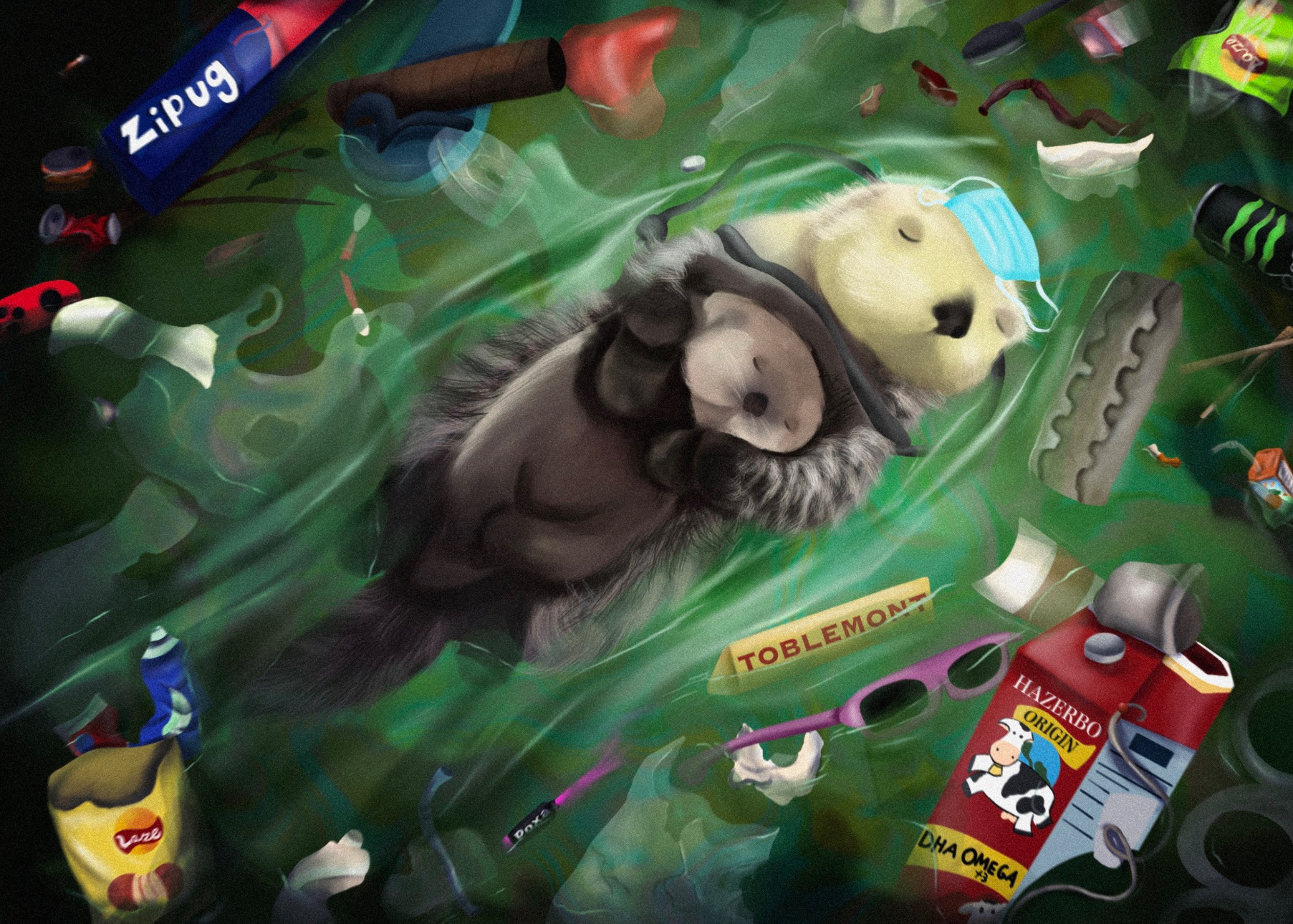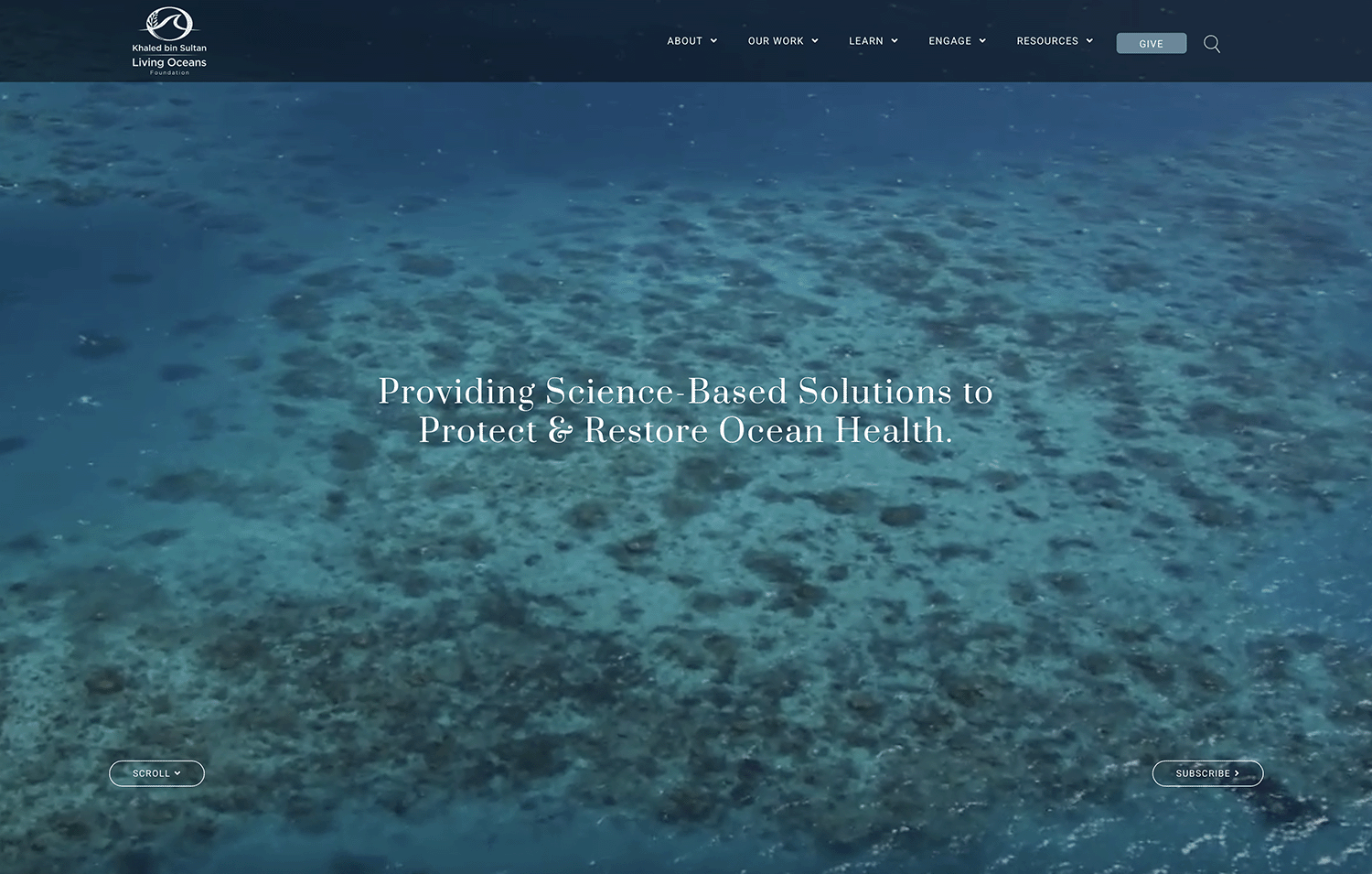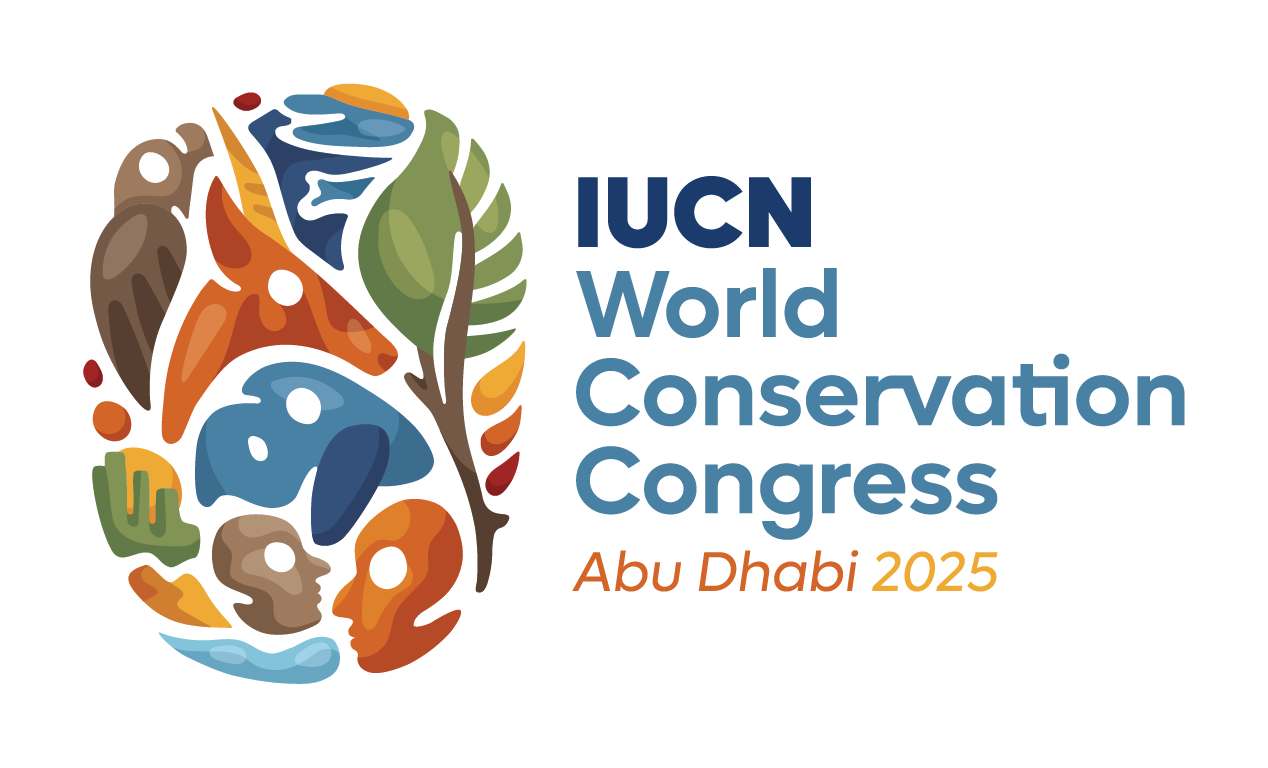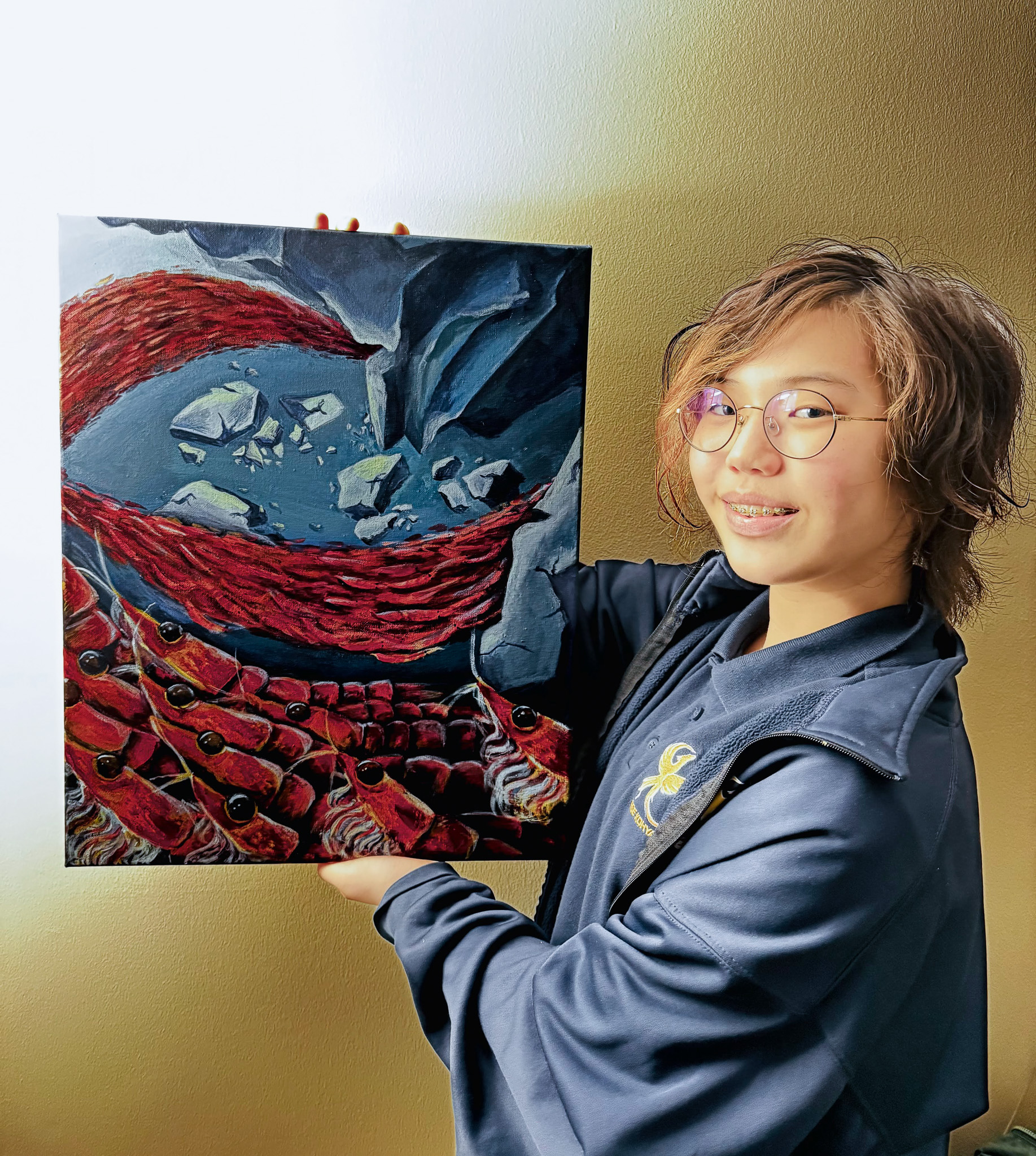
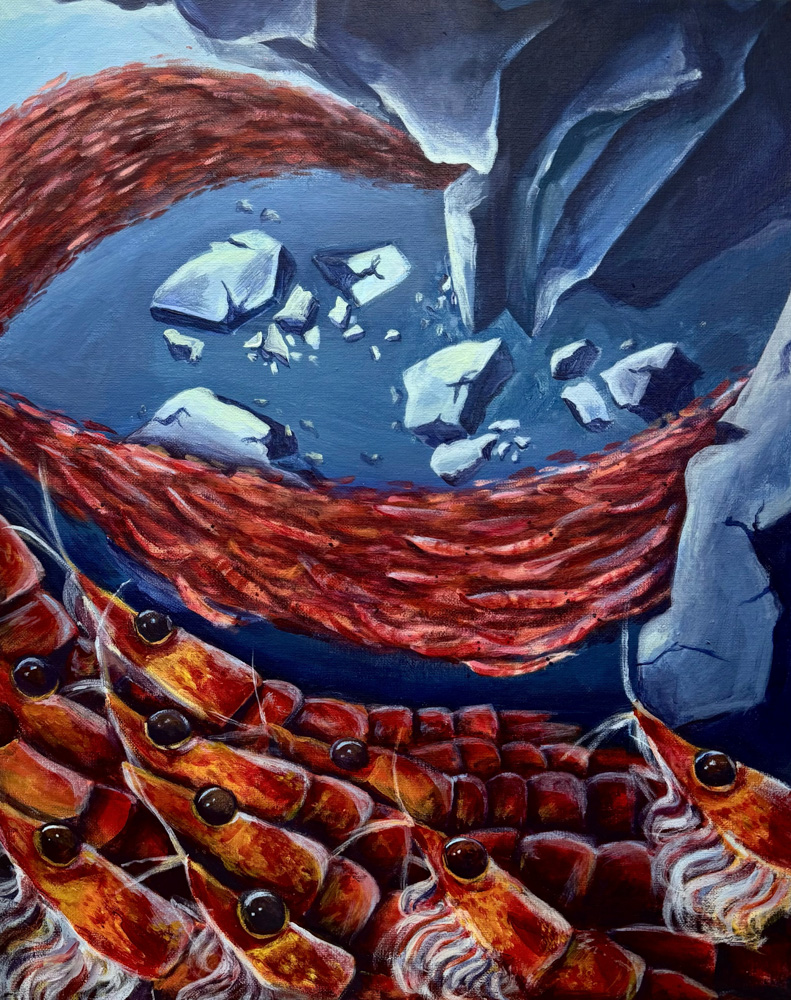
The Science Without Borders® Challenge continues to inspire young artists around the world to use their creativity for a cause. This year’s first-place winner in the 11–14 age group, Gia Kim, stood out for her compelling take on the 2025 theme: Marine Keystone Species. I could immediately tell how passionate Gia was about the message she wanted to convey in her artwork—she fully understood the impact these tiny but mighty creatures make. Her piece highlights krill, a small but essential species in the ocean food web, and communicates a powerful message about the threats they face from global warming.
Gia’s artwork doesn’t just capture the beauty of marine life; it invites viewers to consider how delicate and interconnected our marine ecosystems are. Her teacher, Rachel Shin of Hong Art Studios, praised Gia’s “thoughtful and considerate” approach, noting that she “researched topics that were not obvious or cliché, but rather niche and incredibly important.” Rachel was also impressed by Gia’s artistic discipline, sharing how she “created multiple thumbnails and visual drafts to make sure the piece had the right look,” and reflected on how the experience helped Gia realize “the impact of a strong, well-researched piece and how it can communicate with her viewers.”
Rachel believes this recognition will encourage Gia “to continue using her artwork to raise important awareness,” adding, “Many of these issues aren’t well known to the average person, so using technique and skill to start a conversation with a beautiful piece is incredible.”
Read on to hear from Gia herself about what she learned through this experience, what inspired her artwork, and the message she hopes to share with the world.
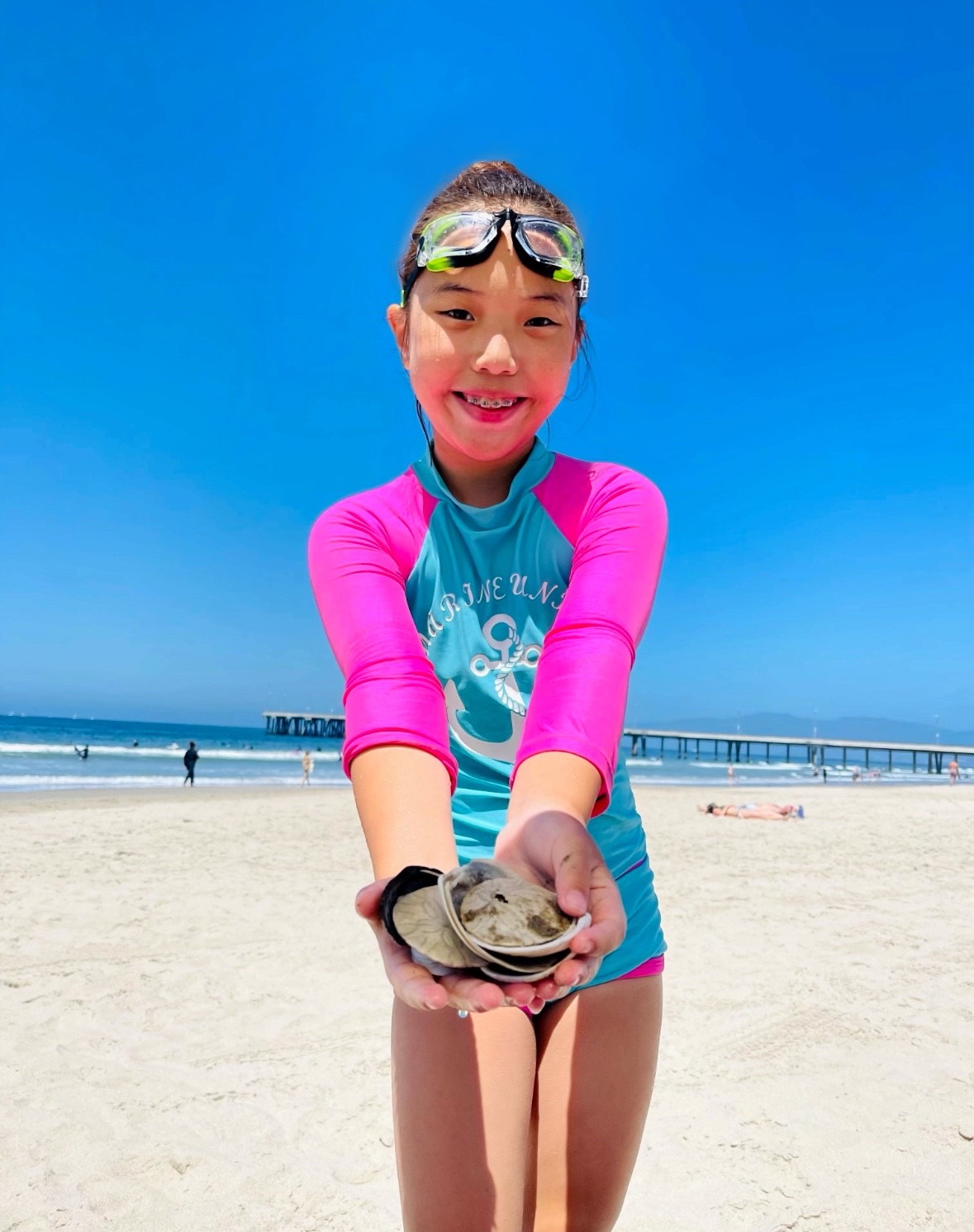
Q: Tell me about your artwork. What is it, and what message are you hoping it will convey to others?
A: The reason I decided to include krill in my piece is because they provide a food source for many marine animals, such as whales, which is also why they are known as a marine keystone species. My artwork addresses deep ecological problems such as global warming and biomagnification. I hope this piece raises awareness about our damaged ocean and what could happen if we continue to harm it.
Q: What did you learn by participating in the Science Without Borders® Challenge?
A: When I started participating in the Science Without Borders® Challenge, I learned that krill play an important role in the ocean ecosystem by providing food that helps keep the food chain balanced. Without them, the cycle would break down. Through this experience, I not only learned more about the ocean environment, but also learned how to push my conceptual work and make it more focused on the topic.
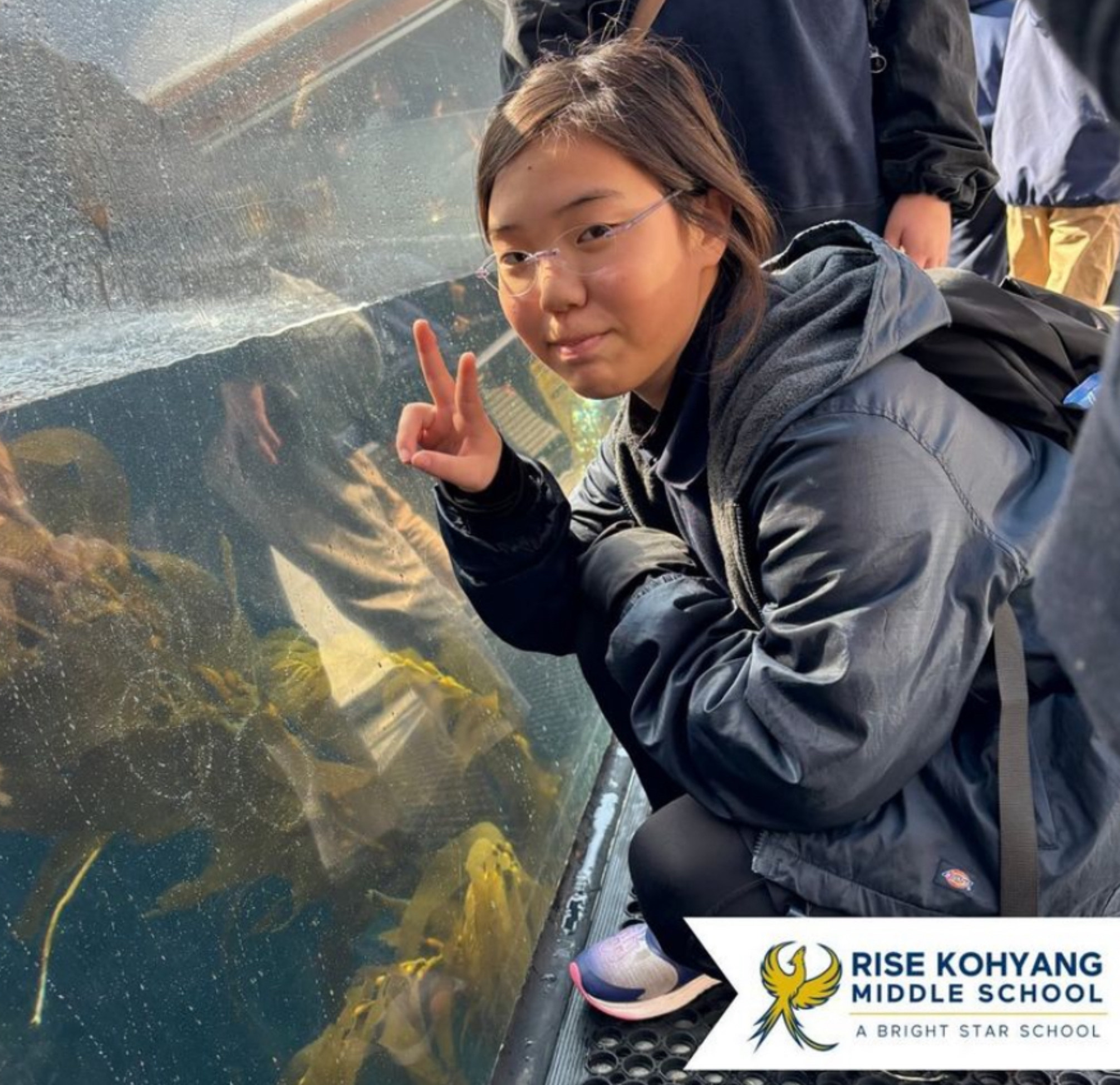
Q: Are there any environmental issues you’re particularly passionate about, and why? Has this experience changed how you see your role in protecting the ocean or the planet?
A: One of the environmental issues I’m passionate about is ocean acidification. This phenomenon, largely caused by climate change and pollution, is one of the many urgent challenges our world faces. It usually refers to changes in the ocean over time that cause it to heat up. This also creates problems in the marine food chain and affects the food supply we eat.
Q: Congratulations! You won the Science Without Borders Challenge! What does winning this contest mean to you?
A: It means a lot to receive the Science Without Borders Challenge award. It helped me feel a sense of accomplishment that increased my passion for art. Throughout my journey, my biggest supporters were my mother and the art teachers at Hong Art, who guided me along the way.
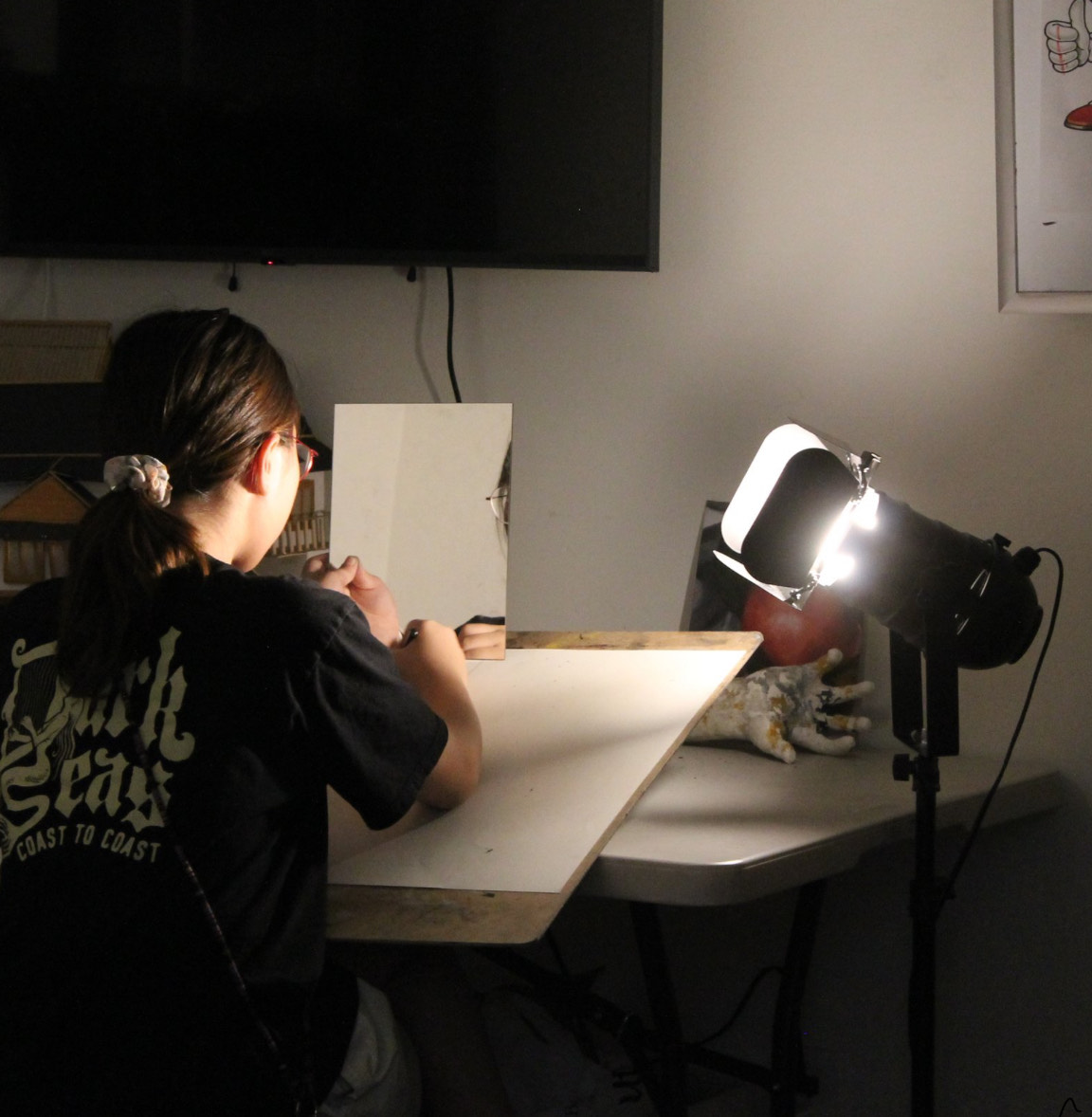
Q: What message would you give to other young artists or students who want to use their talents to help the planet?
A: My advice for young artists who want to help the planet using their talent is this: Show your imagination what the world could be if we cared for it—or what will happen if we continue to deny it. Don’t ever think you’re too small to make a difference. Your talent has the power to change the whole world. So, make people feel something, and make them see what the world is worth saving.
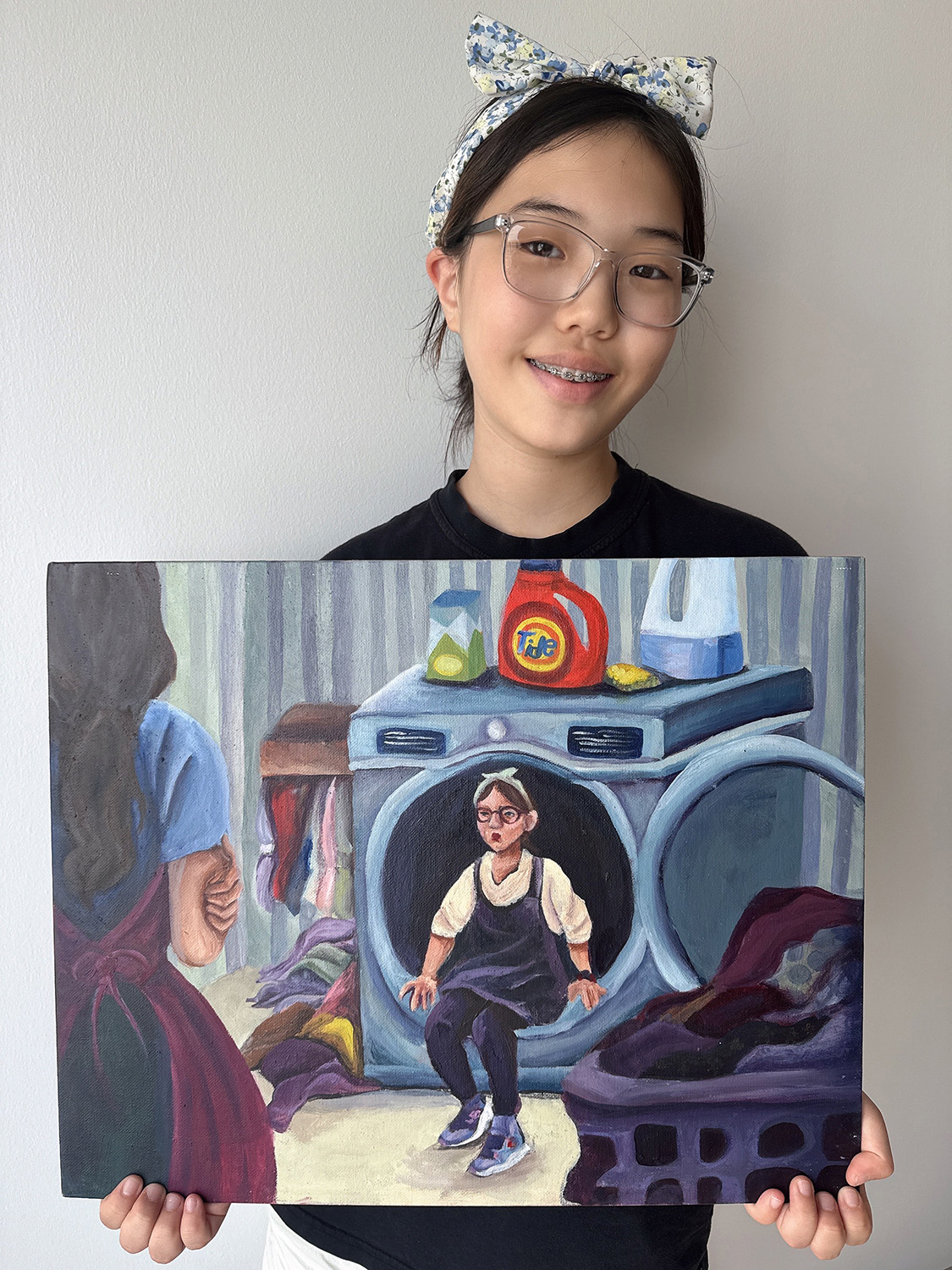
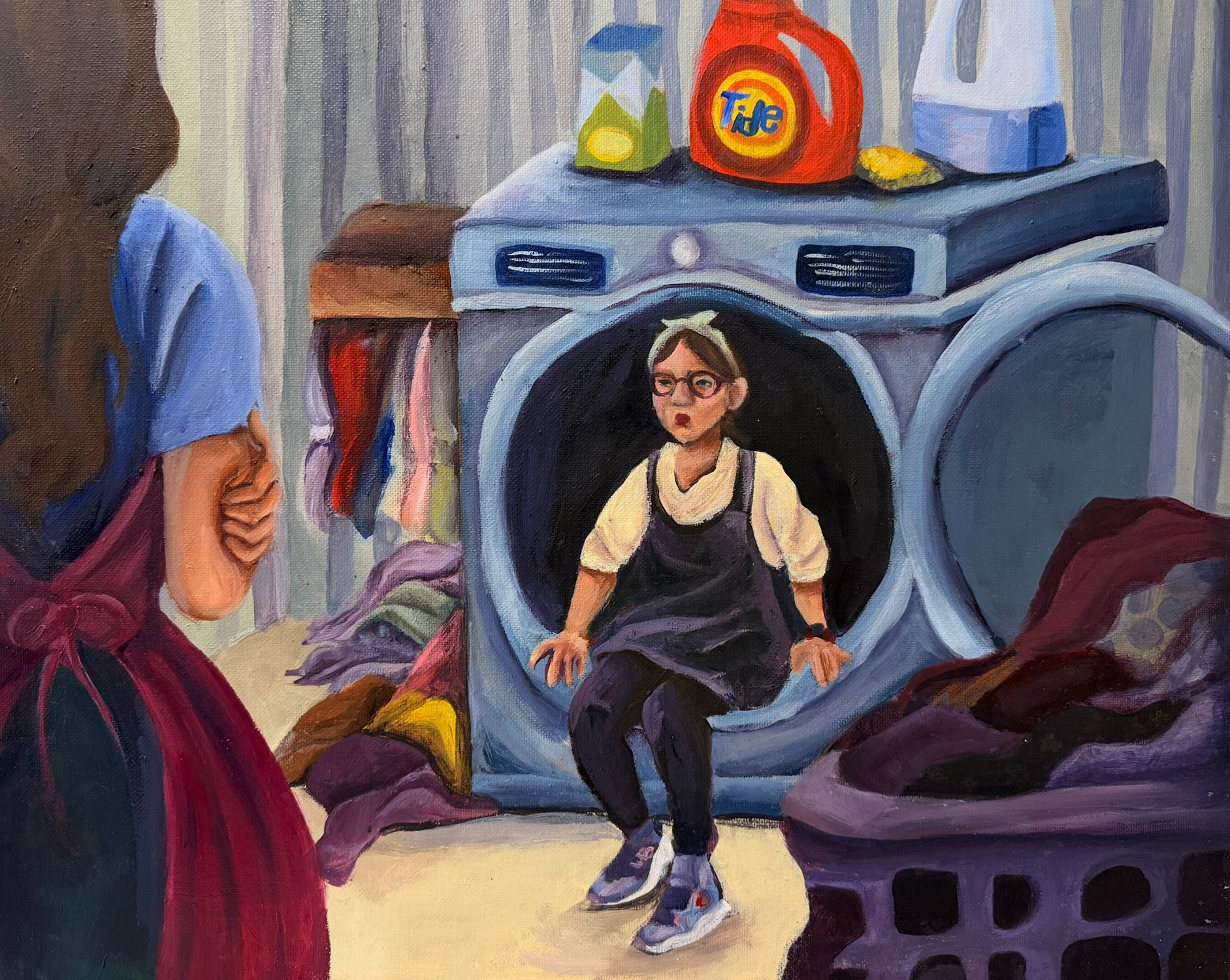
Q: Do you plan to continue creating art about the environment or marine life?
A: I would love to continue creating art that highlights the environment and marine life. I’ve recently read many books about marine life for research purposes at school. One that caught my attention was called Trash Vortex. This book explains how even a small amount of plastic littering can affect the entire water ecosystem. I became deeply interested in researching this topic, which motivated me to create art pieces that raise awareness about caring for the environment. I hope to continue my efforts to inspire people who can help make our planet a better place in the future, not only for the environment but for ourselves as well.
